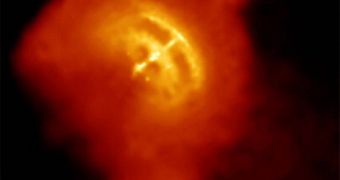The exact mechanisms behind pulsars' emission have puzzled astronomers for quite some time, especially given the fact that they observed unidentified gamma-ray sources during their studies, and could not tell for sure what they were, or what was causing them. In a new study, conducted by researchers at the University of California in Santa Cruz (UCSC), and using the American space agency's Fermi Gamma-ray Space Telescope, a new class of pulsars became visible to the team, despite the fact that it was discovered using only gamma-ray emissions.
“These are the first pulsars ever detected by gamma rays alone, and already we've found 16. The existence of a large population of radio-quiet pulsars was suspected prior to this, but until Fermi was launched, only one radio-quiet pulsar was known, and it was first detected in x-rays,” UCSC Physics Professor Robert Johnson explains. He is also the coauthor of a new paper detailing the finds, published in the July 2nd issue of Science Express, the ahead-of-print version of the journal Science.
Pulsars are a specific type of neutron stars, which spin like crazy around their axis, and give off periodic and massive gamma-ray and radio signatures. Regularly, their periodic radio emissions is what gives their location away to astronomers scouting the skies with the most powerful telescopes in the world.
But, as it was recently made clear, different classes of pulsars also exist, which do not emit radio waves, or that emit considerably more amounts of gamma-rays. The 1,800 pulsars thus far discovered using radio waves could soon be equaled by a similar or even larger number detected after their gamma-ray signatures. “It's been a longstanding question what could be powering those unidentified sources, and the new Fermi results tell us that a lot of them are pulsars. These findings are also giving us important clues about the mechanism of pulsar emissions,” UCSC Santa Cruz Institute for Particle Physics (SCIPP) postdoctoral researcher Pablo Saz Parkinson, also a corresponding author of the new Science paper, says.
“Fermi has truly unprecedented power for discovering and studying gamma-ray pulsars. Since the demise of the Compton Gamma Ray Observatory a decade ago, we've wondered about the nature of unidentified gamma-ray sources it detected in our galaxy. These studies from Fermi lift the veil on many of them,” Naval Research Laboratory expert Paul Ray, from Washington DC, concludes.

 14 DAY TRIAL //
14 DAY TRIAL //